I came back to life and living in Varanasi: Vikas Khanna
In The Slow Cafe with Neelesh Misra, chef and director Vikas Khanna speaks about the various stops in his peaks-filled journey, the people who matter, the importance of recognising privilege and giving back, and why food is the only edible art.
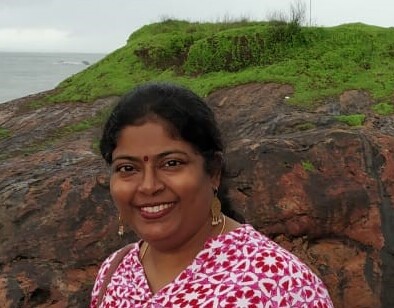
There’s a desi-ness to Vikas Khanna that living in New York for 20 years has not diminished. There’s also no accent. At heart, he remains the child who was castigated for low marks and distinct gait and ridiculed for the shoes he wore, but derived a little joy in that he made round rotis. Food has been Khanna’s therapy, it has been his calling card, and it has also been the route he takes for his philanthropy. Remember the Feed India initiative he started during the pandemic? It fed tens of thousands of people across the country.
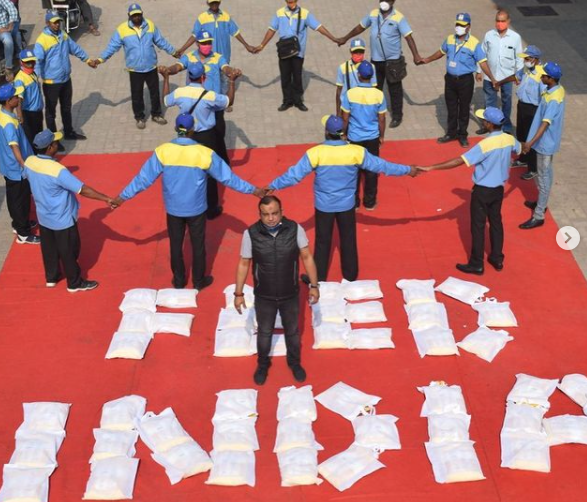
Now, he takes on another avatar as director of The Last Color, starring Neena Gupta. Among the joys the movie gave him was seeing its posters splashed all over Times Square. “It is a great victory for an independent film. Everyone felt it was too simple, but I am inspired by old movies,” he told Neelesh Misra in The Slow Cafe.
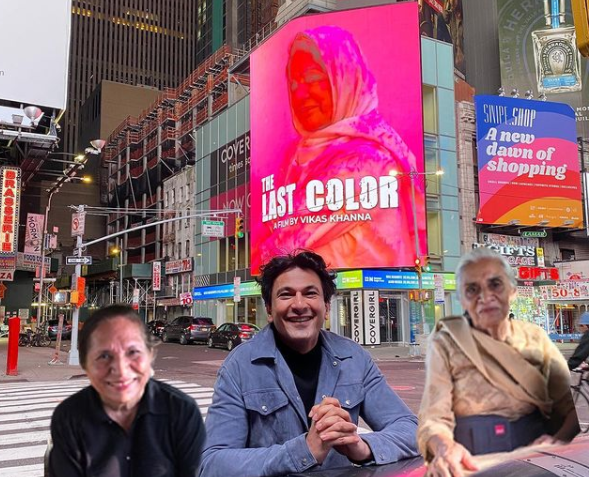
In typical Khanna fashion, where he eschews the pomp and grandeur associated with a celebrity chef, the film was also shot quietly, in Panchganga ghat, a little away from all the action.
By now, the world knows of how Khanna moved from Amritsar to the US at the age of 29. But not many know of the details of his journey from say ages six to 29 or from 29 to the now, but for the big portions that make for catchy headlines. Michelin star, Masterchef India, nearly 50 books… these are all the peaks, but his route to these peaks is even more interesting, and that’s what Misra nudged out of him during the 70-odd minute show.
Women have played a huge role in Vikas’ life; he’s always acknowledged his mother and grandmother, and how they tried to make sense of a child who was distinct from others and struggling to fit in, before he bloomed. In the show, he spoke of the others who made him — the neighbourhood aunties who would not return the cassettes borrowed from his father’s lending video library on time and how he had to beg them; the bhabhiji from Peshawar (their neighbour in Amritsar) who wore white and on whose palms he would draw a dot in pink, her favourite colour, for Holi; and his aunt who was also inspiration for The Last Color. His aunt loved colour, and when she lost her husband and visited her family, Khanna’s father fell on his knees seeing her in white.
Khanna has also seen first hand inequality and that’s a word and emotion he loathes. He is unwilling to brush it aside or pretend all is well. “There is a lot of prejudice against people of colour who cook. The three people with me when it was all dark were my parents and grandmother. I’d get on the phone in the dark, it would be cold outside, and their words would warm me,” he recalled. Even now, he calls his mother twice a day, on waking up and before hitting bed. “She’s the one who does not care about the success, just about me.”
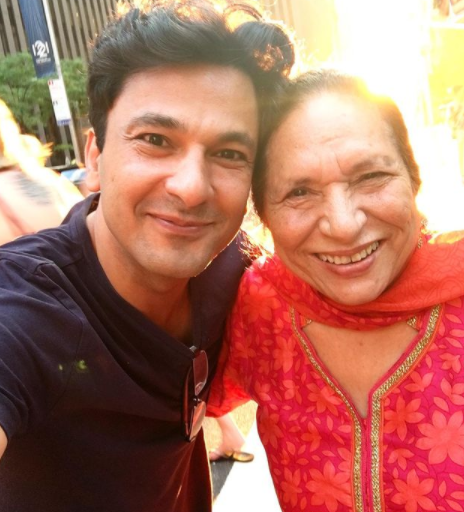
Today, he might be a big name, but “somedays, I feel I am overrated”, confessed Khanna. There is also the intense pressure on chefs. “The difference between a regular place and a Michelin-starred one is the discipline. There’s also the kind of risk you are willing to take. It will take a toll on your health, on your mind. They can find one mistake and destroy you, or find one good thing and uplift you. Not many outside know of this pressure,” he said.
But despite all this, Khanna stays happy. He said he has always been happy — even when ticked off when asking for a video cassette to be returned or while selling glasses to Amritsar Club, without knowing anything about the business. At its core, it all probably came from the fact that Khanna realised early on that he was different. “Once, a teacher told me that I would have sympathisers, never friends. That hit me hard. Why would someone tell a child that?,” he said. This was around the time the student who did not clear his class 3 and 4 exams got kicked out of school in class 5. Why? Because when everyone had to parrot an essay about “mother”, just replacing the name, Khanna decided that his mother was worth being written about on her own merit. “I’d just then discovered what was pregnancy, what is delivery and wrote something about how before anyone else, your mother makes you in the womb. My mother was summoned to school. I was sent out. We are so used to templated education that this is an aberration. And that’s when my grandmother mentioned in passing that I should write my own story. She convinced me that my making round rotis is a superpower,” Khanna said.
What tempts Khanna to take up challenges at any age? “Well at 50, I taught myself filmmaking. And, for inspiration, on my desk, I have the New York Times review of Pather Panchali, which said it would not have made the rough cut with editors in Hollywood. I decided to be on the stage and not be the critic.”
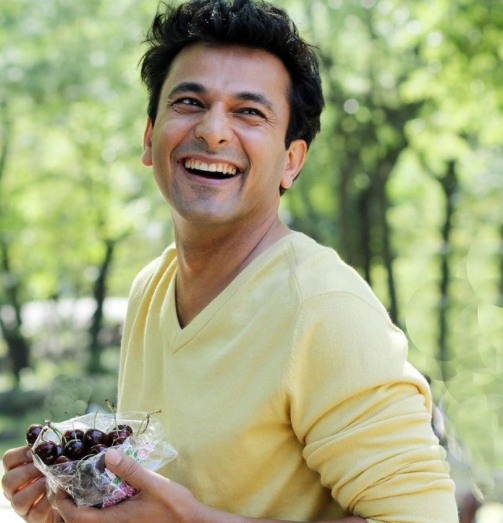
But setting him on this path was an uncle who lived in Ireland and noticed what the world did not — that he was honest and that he loved making and serving people bhaturas. Khanna did his hotel management course in Manipal in Karnataka and went on to work in the star hotels, before deciding he would help his mother with the banqueting business, because people “can be very unkind to women in catering”. From a place where the kitchen did not have a ceiling and when they dreaded the rain, he raised the business to a different level, and told Misra with all modesty that at one time he was the richest bachelor in Amritsar, with many cars. And then, the banquet hall was demolished due to some dispute. He left for the US, to make something of his life.
There he discovered the class hierarchies at work. He was in a homeless shelter from December 2000 to January 2001. He did a bunch of things to stay afloat, and everything changed with the Michelin and a review in the Times on March 29, 2011. “I used to wonder what the deal was, but my colleague at the kitchen Andrew Whitemore told me it meant something. Suddenly, I found myself getting validation. I was happy making uthappams and indulging in small talk, but the phone did not stop ringing for two weeks.”
Among the other things that Khanna does, including a catering business where he makes his money, he’s planning to shortly open an Indian cultural centre in Manhattan to promote Indian art, culture, heritage and the culinary arts. It’s named ‘Binder’, a derivative of his parents’ names Bindu and Davinder. In a way, this is Khanna’s way of giving back to the people who made him, and stems from the acceptance of his position and privilege.
When the Gordon Ramsey show happened and there was a crowd outside his restaurant, Khanna felt he was 29 again — he felt they were going to break this down too, like the banquet hall. Till he realised, they were there to taste his cooking! This was around the time he opted out of the David Letterman show, saying he did not want to “add to the stereotype” about Indian cuisine. This was also when he was labelled the “hottest chef”, saw that about himself on a newspaper and wondered if it were all true.
What Khanna cherishes most about his culinary journey is the lives touched. “Someone talks of how their son ate his first Indian meal at my restaurant, someone remembers the free garlic naan I served. That is joyous and validation of what you’re doing. Plus, food is the only edible art — my art is absorbed by your metabolism,” he said.
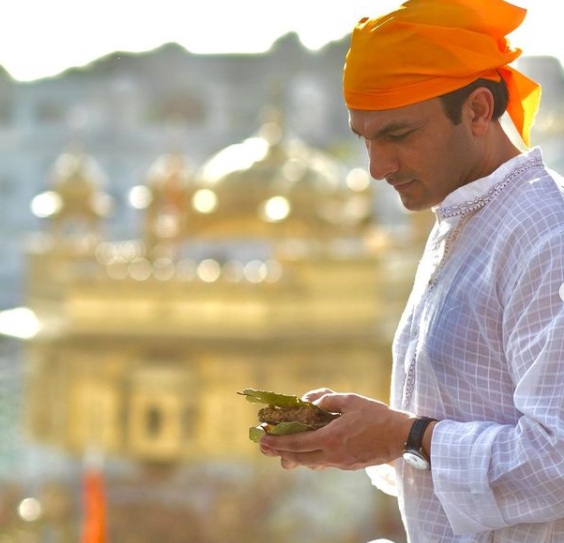
And then, Khanna spoke about how he learnt the joy that cooking gives from the restaurant Sasuma, run by women, in Surat. “It was like walking into someone’s home for a meal. Whenever I go there, I sit in a corner and eat. It’s like ‘prashad’. And so, Sasuma is my benchmark, not any Michelin starred place. It has its moral compass right and has understood the power of the food business.”
When the conversation moved on to cookbooks Khanna told Misra how he learnt to photograph, because his books needed to be sustainable and he had to write 50 books, a promise he made his father. All the culery that be bought for shooting now sits in a museum he set up in his father’s name in this alma mater.
The Last Color is an ode to women too, the right thing for someone who was chiselled by strong women. “Once during Holi, I saw the widows see all the celebrations from their windows, and it brought back memories of the people not allowed to live life. My grandmother could not hold me when I was born! I wrote the story on the flight back from Delhi, and soon enough, we decided to make a movie of it, and I approached Neenaji who was willing and just wanted the dates so she could come to Varanasi.
Varanasi also comforted Khanna who sought refuge there when his father passed away in 2015. He would sleep on the boats, and let the Ganga lull him into fitful sleep. “It is a city that comforts you like none other. It is witness to so many centuries of faith…” It is the city that healed a man who was crushed that he could not be with his father and felt he had suffered his biggest loss. And then, a boatman told him that the Ganga was singing him a lullaby and that I should not be sad about my father because he’s living within me and that no force could separate a parent and child. I came back to life and living,” he said.

